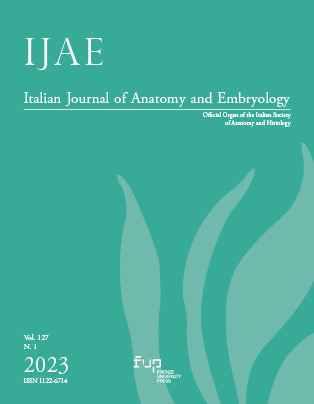Effects of low dose bisphosphonates treatment on the mandibular bone in rats with and without mini-implants application: an experimental model
Published 2023-08-28
Keywords
- mandibular bone,
- osteonecrosis,
- bisphosphonate,
- mini-implant,
- osteocytes lacunae
How to Cite
Copyright (c) 2023 Antonio Centofanti, Michele Runci Anastasi, Angelo Favaloro, Francesco Saverio De Ponte, Luciano Catalfamo, Giuseppina Cutroneo, Giovanna Vermiglio

This work is licensed under a Creative Commons Attribution 4.0 International License.
Abstract
Bisphosphonate-Related Osteonecrosis of the Jaw (BRONJ) is a pathological condition observed in patients underwent oral surgical procedures during bisphosphonates treatment. Although several studies have focused on the BRONJ, the exact pathophysiological pathways remain still unclear. In this study we aimed to observe the effects of the low-dose bisphosphonates administration on mandibular bone of rats with and without mini-implants application. For this study we used 28 male Wistar rats, divided in in two groups: 1) control group, treated with saline solution (n = 14 rats); 2) ZA group, treated with low dose zoledronic acid (n=14 rats). After 6 weeks of treatment, the half of each group underwent mini-implant application. All rats were sacrificed and their mandibles were analyzed by light microscopy and scanning electron microscopy (SEM). Our data have shown a healthy bone tissue of control group both with and without mini-implant application. In the treated group empty osteocyte lacunae have been observed and they slightly increase in rats with mini-implant application. Although that, no bone exposition has been observed. By that, during low dose zoledronic acid treatment we can observe the presence of empty osteocytes lacunae, also called “primary lesion”, that not seem to be sufficient alone to determine osteonecrosis of the jaw spontaneously or even after mini-implant application.

